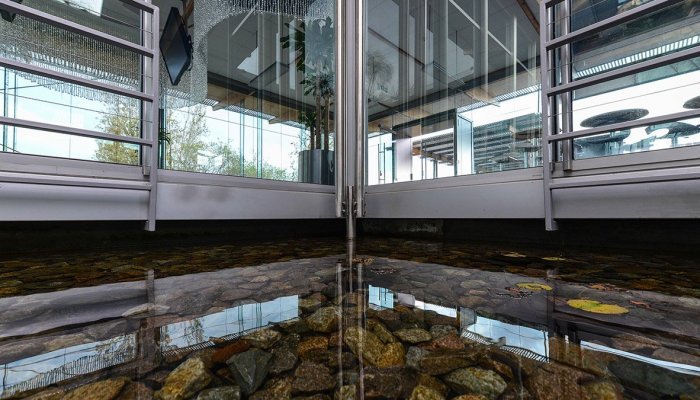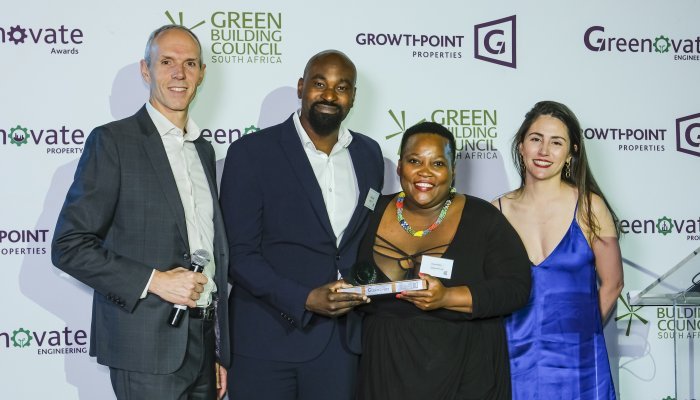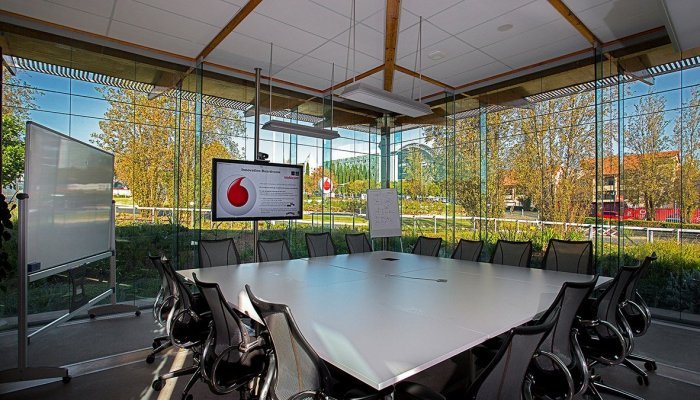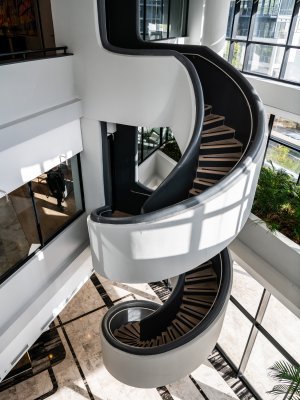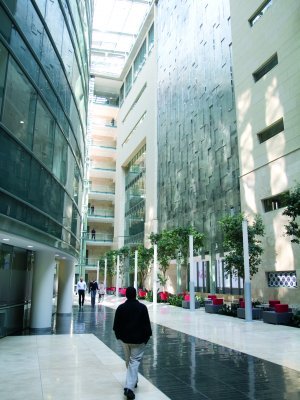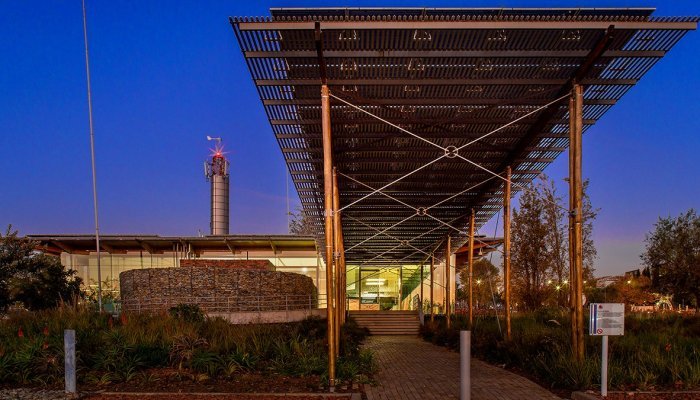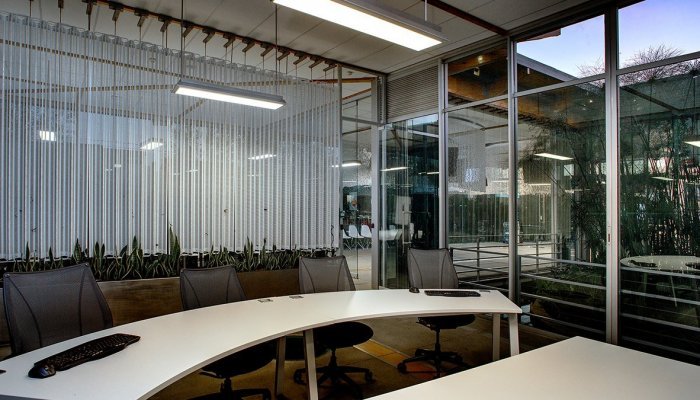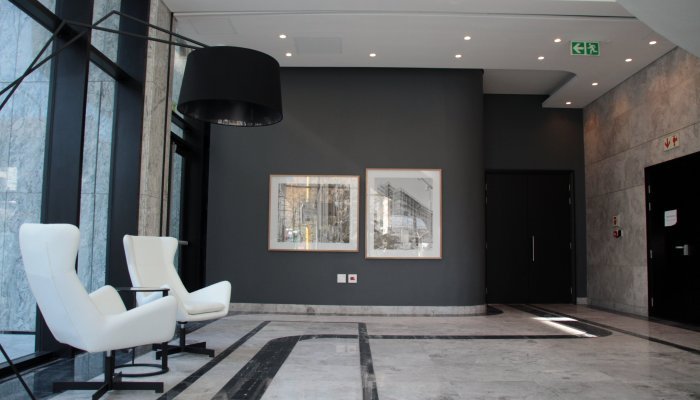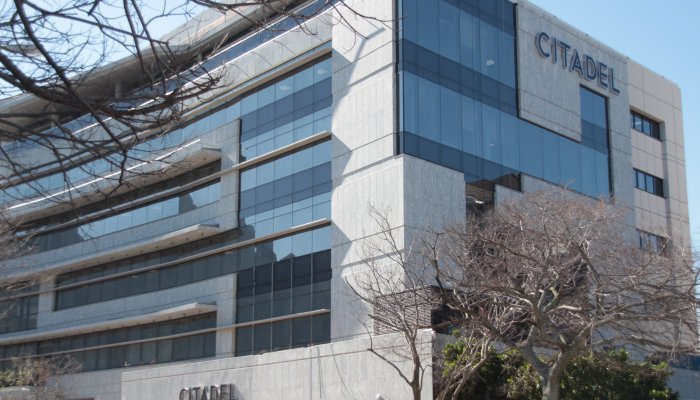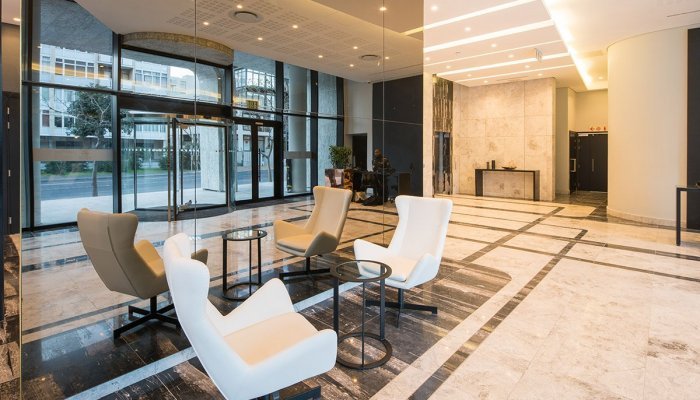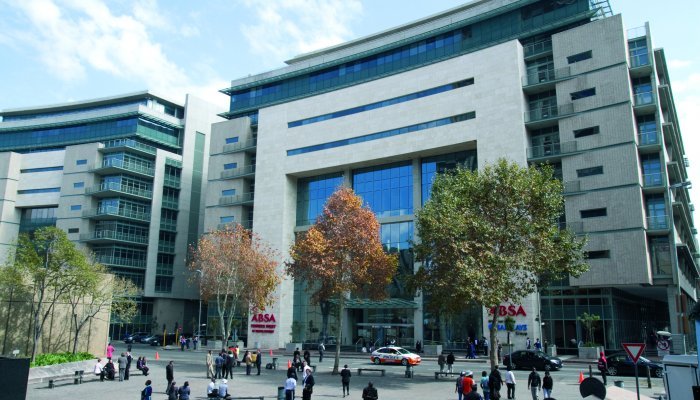At the centre of this shift is the Green Building Council South Africa (GBCSA). Founded in 2007, GBCSA intended to equip South Africa’s commercial property sector with the training, tools, networks, and know-how to embed greener, more sustainable thinking across the building sector, from architectural design and décor to construction, building, and resource management. To help change how the world is built, GBCSA developed a Green Star SA rating system and associated certification to give new and refurbished structures an objective green ranking.
Corporate heavyweights soon came to the party, from specialist wealth management company Citadel to banking groups Absa and Standard Bank, professional services firm Deloitte and telecoms giant Vodacom, all of whom have embraced the concept of greener, healthier, and more environmentally friendly office spaces.
The greening of corporate SA
At the end of 2023, GBCSA certified its 1 000th building in South Africa: the 6 731m2 collection of structures at Stellenbosch University that house the department of visual arts. The heritage building, which was constructed in 1905, achieved a six-star rating and features energy-efficient lighting and air conditioning systems as well as green transport options.
In 2011, telecommunications group Vodacom’s Midrand Innovation Centre achieved the first six-star rating for building design in the Southern Hemisphere, thanks to an intuitive and harmonious design by GLH Architects, which involved trialling several innovative systems at the time. More recently, in 2024, two buildings at Vodacom’s Midrand headquarters were awarded five-star ratings for existing building performance by GBCSA. The sites feature a solar farm and electric vehicle charging station for customers and staff.
In 2016, specialist wealth management company Citadel similarly put its sustainability commitments to the test during the construction of a new office in Cape Town. Working with Louis Karol Architects and design architect Robert Silke & Partners, which also did the interior design, the project team tackled the challenge of working on the small site with gusto and eventually created a four-star green building with a look and feel of old New York.
The energy and water saving from operating a green-rated building like The Citadel not only reduced operational costs – on average by 30% compared to conventional buildings – but is also credited with creating a better and healthier working environment for employees, in part thanks to a design approach that incorporates indoor green spaces.
Explaining Citadel’s rationale supporting the green building movement, Citadel CEO Andrew Möller says, “Continuously finding ways to reduce our environmental impact remains a key business priority. Our offices are in green-rated buildings, and over the years we have implemented various tangible measures to support our commitment to sustainability. These range from digitisation and reducing travel to smart metering and motion sensors. Having offices in certified green buildings fits in with Citadel’s environmental ethos and the group’s ambitions to strive for a greener, more sustainable future.”
Trends to watch
This level of corporate support is important but it is not the only trend worth watching in the green building space. Georgina Smit, head of technical at GBCSA, says noteworthy trends include the incorporation of smart technology into building design, as well as using design methods to help bring the natural world inside – as was the case with the Vodacom Innovation Centre. New shifts are also emerging due to climate change, such as the use of resilient or adaptive design elements such as adding flood deterrents and overheating mitigation glass, incorporating indigenous flora and vertical green spaces.
In South Africa a move towards retrofitting existing buildings is an important trend that is reflective of the current economic climate and post-Covid focus on human health. “From a sustainability perspective we obviously think this is great, because it’s about reusing old stock for a new purpose,” says Smit. She adds that part of this process involves finding ways to make retrofitted buildings attractive to tenants to keep tenancy levels high.
Smit also acknowledges that in the current economic climate “some building and construction firms are under extreme pressure”, and that these capacity constraints and tighter client budgets sometimes make it hard to achieve the desired sustainable outcomes. However, she stresses that the more tools at their disposal, the more widespread green building practices become, and the more knowledge is shared, the easier it will become to tip the scales even more towards healthier, human-focused buildings that work in harmony with the community and the environment.
From an architectural perspective, Smit says product selection for carpets, paints, and joinery is increasingly being considered from a human health perspective. Meanwhile, how a building interacts with its external environment – from the types of insulation to the use of natural light and heat regulation – are all factors of which architects and developers are well aware. Other factors include managing glare from adjacent buildings or nearby water sources, ensuring acoustic comfort and even designing stairs “to make them into a place of connectivity that incentivises people to use the stairs and move their body during the day”.
While many of these are trends of design, fuelled by a widespread realisation that bringing in daylight and fresh air enables green buildings to better support the health and wellbeing of its occupants, getting the balance right requires careful management.
Pulling it all together
Given that local energy capacity and water constraints remain challenging, any building or refitting project in South Africa must certainly consider energy efficiency and alternative supply. In this respect, the international push towards net-zero carbon emissions is also a motivator, says Smit, noting that GBCSA has “certified about 45 net-zero projects in South Africa already”. These include Vodacom’s Innovation Centre, Estuaries Plaza in Cape Town, Greenfields Industrial Park in Cape Town and Two Dam in the Western Cape.
“We have breathing, living examples of buildings that have achieved net-zero to a certain degree, based on the parameters we use to judge where a building is at in its current life cycle,” says Smit.
However, creating the right balance to support net-zero ambitions or a green building rating requires the careful management of multiple touchpoints and a clear understanding of how each factor affects the other. This is where technology has an essential role to play in helping green buildings achieve optimum resource management, believes Songo Didiza, a partner at resource management consultancy Oelinga. In 2023, Oelinga won the Greenovate award in the proptech sector, an accolade that enabled Didiza and her partner, Zadok Olinga, the opportunity to highlight their real estate services platform: Oelinga Advanced Research Utility Management (OAR-UMP).
As design teams, engineers, architects, and developers continue to seek ways to enhance building efficiency and sustainability, resource management will become increasingly important for both building tenants and facilities managers, explains Didiza. Even in the design phase, by integrating “utility data visualisation platforms into their design proposals, architects can demonstrate their commitment to sustainable design practices and provide valuable insights to building occupants and facility managers”.
Didiza explains that for engineers developing electrical and water reticulation specifications during the design phase, “access to real-time utility data becomes crucial for making informed decisions. By incorporating data from smart meters into their design processes, engineers can optimise energy and water usage, identify areas for improvement, and ensure that buildings are equipped with efficient systems from the outset.”
Platforms such as OAR-UMP go a long way to supporting Smit’s hope that "no building is ever left behind". Yet, it is not the concept but the cost that remains a sticking point for some.
What about the costs?
For the past decade, GBCSA has given particular attention to the issue of cost. In 2017, GBCSA, the Association of SA Quantity Surveyors and the University of Pretoria (UP) released a cost and trends report that showed the average cost premium of using green building methods rather than traditional construction methods was just 5%.
Subsequent studies showed a continued decline in the average green building cost premium from “only 3.96% in 2019, reducing to 3.63% in 2022”, according to UP’s Danie Hoffman and Hoffie Cruywagen.
This type of quality local research is essential to dispelling myths that green building methods are exorbitant, while also helping decision-makers to informed choices about "going green". Smit adds, “We are actually demonstrating that green design is good design, that will typically translate into financial benefits.”
For instance, the 6 000m2 Citadel building with its additional 6 000m2 basement parking levels was constructed for R130 million, equating to a construction cost of just over R10 000/m2, the project team told Construction Review. This was achieved at a time when developments were running at between R15 000 to R20 000/m2.
A real-world example, perhaps, that good taste and green credentials don’t have to cost the earth, even as they are playing their part to help preserve it.
How advanced are SA’s sustainability perspectives?
As price objections to green building become less paramount, the issues of skills, will, and know-how are becoming more important.
To really grab the opportunity to create more sustainable cities and healthier building ecosystems, Gretchen Williams, education manager at GBCSA, believes green thinking must be incorporated into professions like architecture at tertiary education level. “I don’t think we should assume that within the sector there is the knowledge and skill set,” she says. “Yes, we engage with professions with great experience and knowledge, but there is still a large volume of professionals and individuals, especially at government level, where there is a knowledge and skills gap.”
GBCSA currently works with several local universities to upskill students on sustainability matters, but Williams believes the curricula across the country must change to reflect new mindsets and methods. It’s no longer sufficient for universities to offer a short course on green transport or green building, and consider this sufficient grounding, she says.
KEY TAKEAWAYS
- In step with global trends and driven by climate change implications and net-zero commitments, the built environment is adopting green methods from design to engineering and day-to-day resource management.
- A move towards retrofitting existing buildings is an important trend that is reflective of the current economic climate and post-Covid focus on human health.
- Ongoing research dispels the view that green buildings are costlier than using traditional methods.
- Now, greater attention must be paid to equipping future architects, engineers, builders and consultants with the know-how needed to create more sustainable cities and healthier building ecosystems.


